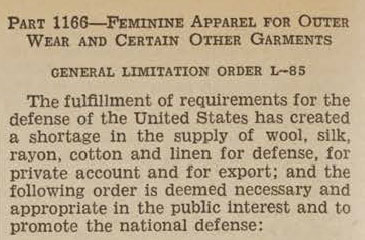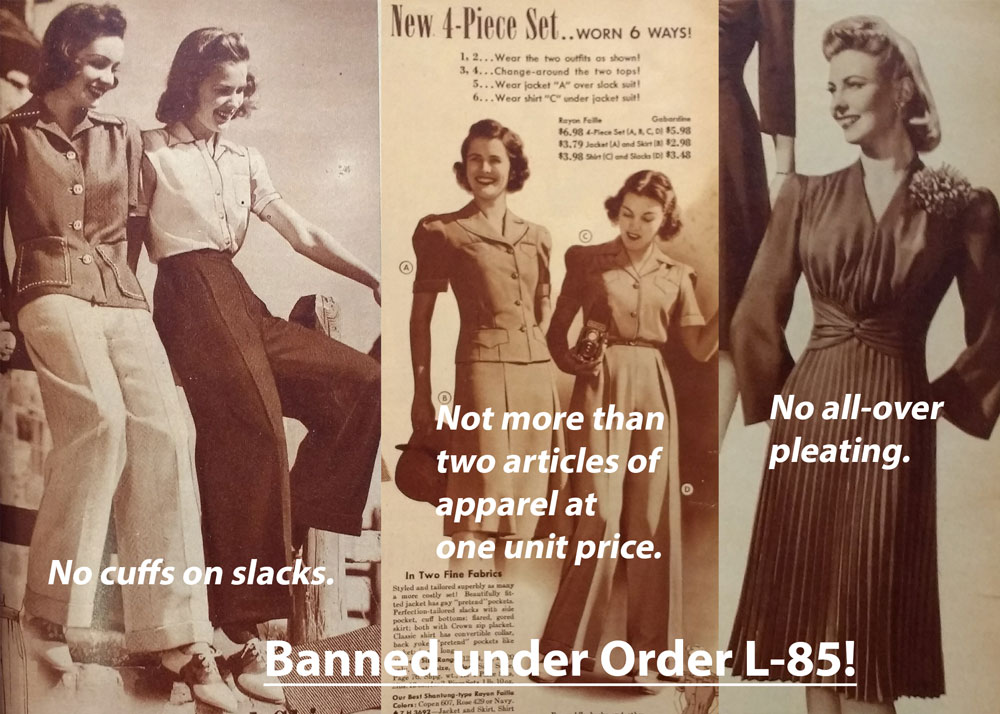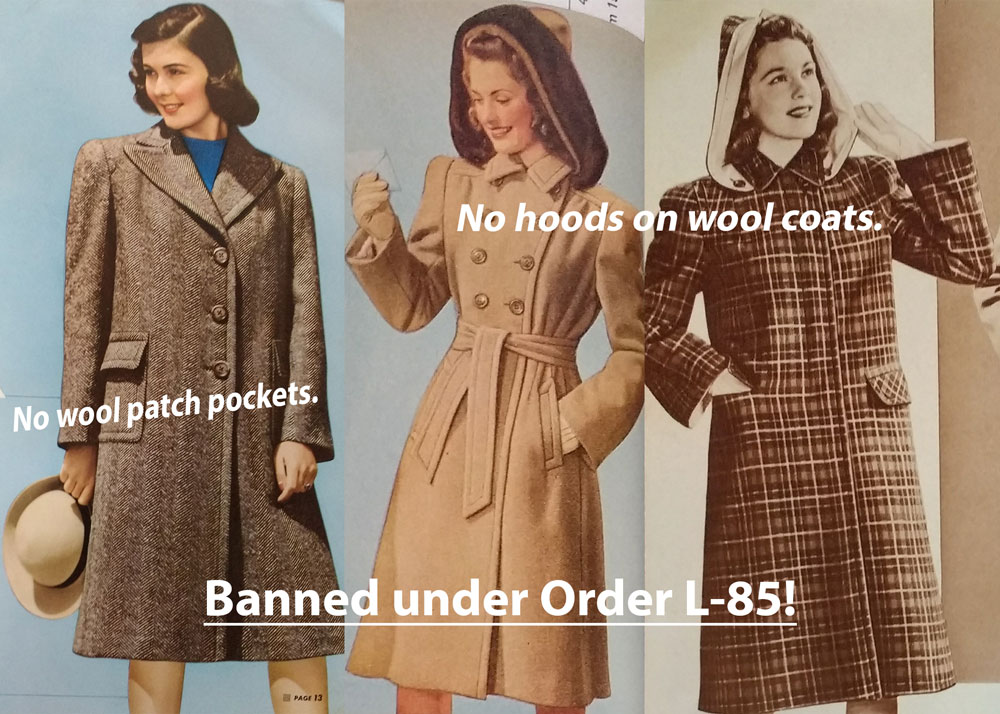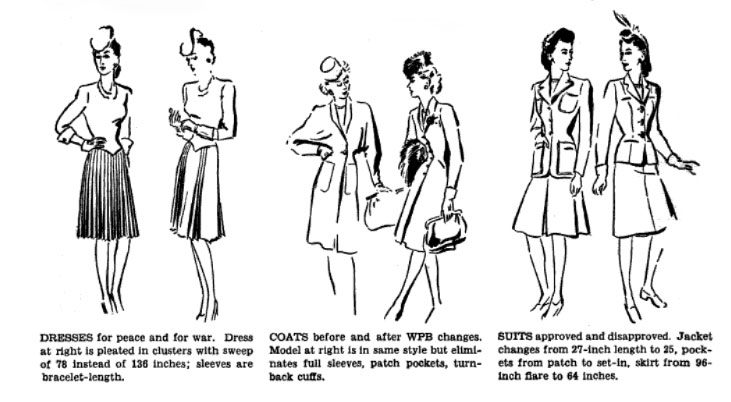This week is New York Fashion Week, a grand tradition in the world of fashion that can trace its roots, interestingly enough, to World War II. Started in 1943 as “Press Week,”, the goal of the event was to “boost American fashion during the occupation of France” (Fashion Week Online, History of Fashion Week).
And American fashion may have needed such a boost—at the time, the industry was operating under production restrictions established to save material for the war effort. Of these restrictions, the War Production Board’s cloth-conserving Limitation Order L-85 received the most attention.

As stated in a WPB press release dated April 8, 1942, Order L-85 proposed to “make possible the production of at least 15 per cent more garments out of the same yardage of cloth” by curbing extremes in dress style such as “long, full skirts and sleeves that would waste missions of yards of material.” It established maximum lengths and sweeps (circumference of the bottom hem) for coats, dresses, suits, jackets, and skirts that apparel manufactures had to adhere to. It also eliminated the use of fabric-heavy elements such as French cuffs, balloon sleeves, and patch pockets, prohibited the sale of ensembles of more than two pieces for one price, and more.
Room for creativity and self-expression was also addressed in the press release: “The order does not mean the standardization of women’s clothes. Within the limitations fixed in the order, fashion designers, dress manufactures, and housewives are free to use their ingenuity in creating whatever fashions may strike their fancy.”
In adapting to these limitations, the fashion industry put their ingenuity to good use. According to the February 1, 1943 issue of Vogue, “No law compels us to wear clothes as narrow as these. L-85 allows much more generous measurements. Of our own free will, we’re wearing them. Voluntarily, a group of American designers have pledged themselves to use less fabric than L-85 allows—in order to save every yard. For the more fabric saved today—the less chance of shoe-string rations tomorrow.”
The article Hemline of Battle from the April 18, 1942 issue of Business Week summed it up by saying that Order L-85 limited “the amount of yardage that may henceforth go into milady’s gown,” causing a “shortening of hemlines and narrowing of silhouettes.”
And there you have it, a glimpse of the American fashion situation at the birth of New York Fashion Week. Hopefully this historic context will further your appreciation of the collections today’s talented designers will present over the next few days.



